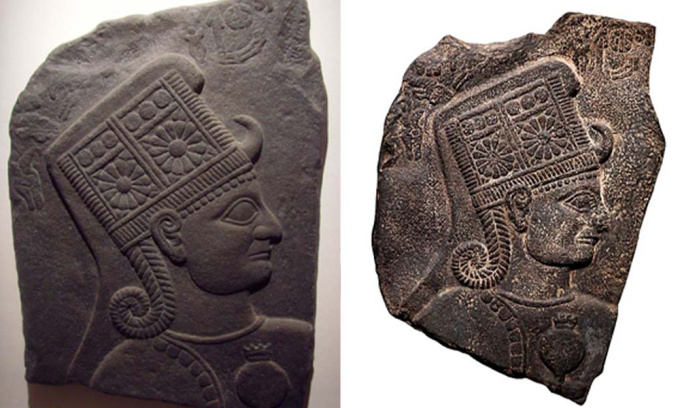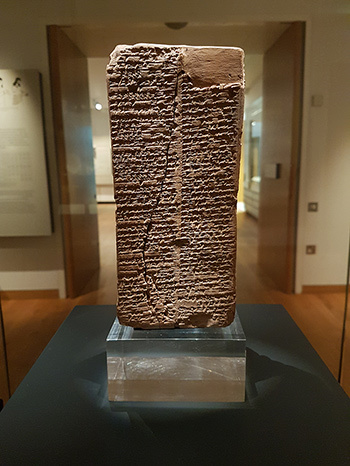Queen Kubaba is the only woman named in the Sumerian King List and is said to have commanded a powerful army.

Relief of Queen Kubaba as a goddess. Photo: Wikimedia/CC BY-SA 2.0 FR
From Cleopatra to Razia Sultan, history has recorded many powerful women. Among them, Queen Kubaba, who ruled the Sumerian civilization in southern Mesopotamia around 2,500 BC, was likely the first woman to become a king in ancient history. Her story is an important piece in helping scientists understand the role of women in ancient societies, Ancient Origins reported on May 6.
Kubaba's name appears on the Sumerian King List, which is the only written record of her reign. The list lists the kings of Sumer, briefly noting the duration of each dynasty and the city-states they ruled. In this list, Kubaba is referred to as lugal (king), not eresh (queen). She is the only woman to appear on the list.
The problem is that the Sumerian King List is not a completely accurate historical source. It often mixes history and myth. For example, the list names Enmen-lu-ana and claims that he ruled for 43,200 years. Kubaba is also given a 100-year reign, which is incredibly unlikely. However, it is also possible that the concept of time was interpreted differently than our modern time system.
Queen Kubaba's description is longer than most, suggesting that ancient scribes found her remarkable. Next to her name is the inscription "The tavern-keeper who established the foundations of Kish." How Kubaba came to power in the city-state of Kish (in modern-day Iraq) remains a mystery, but most agree that she was a tavern-keeper.
Some sources suggest that she was a member of the ruling dynasty in Kish and inherited the throne from her father. However, others suggest that she was a commoner who rose to power through her own ability and charisma. Whatever the case, Kubaba was a prominent leader and left a lasting mark on Kish.

The Weld-Blundell prism in the Ashmolean Museum, Oxford. The prism is about 20 cm high and 9 cm wide, and is inscribed with the Sumerian King List in the Sumerian language. Photo: Wikimedia
According to ancient Sumerian tradition, kingship was not tied to a fixed capital but moved from place to place. The honor was bestowed upon a city by the gods and changed according to their will. Before Kubaba, the capital was at Mari for more than a century. After Kubaba, the capital moved to Akshak. However, Kubaba's son Puzer-Suen and grandson Ur-Zababa temporarily moved the capital back to Kish.
One of Kubaba's most important achievements was the construction of the temple of the goddess Inanna. The temple was located in the center of Kish and was one of the most important religious sites in the region. Kubaba was said to have been a devotee of Inanna, and the temple reflected her religious values and beliefs.
In addition to her religious duties, Kubaba was also a military leader who controlled a powerful army. She is credited with expanding the territory of Kish through a series of military campaigns, making Kish a regional power. Military prowess was an important factor in Kubaba's reign, ensuring her continued rule over Kish.
As for the reasons for the end of Kubaba's reign, experts believe that she faced opposition from rival city-states and from Kish itself. According to some accounts, she was overthrown by her own subjects, while other accounts say she abdicated and went into hiding.
In the millennia after her death, Kubaba was deified and worshiped as a Neo-Hittite goddess. Studying Queen Kubaba is an essential part of understanding one of the world's earliest civilizations.
Thu Thao (According to Ancient Origins )
Source link
































































































Comment (0)